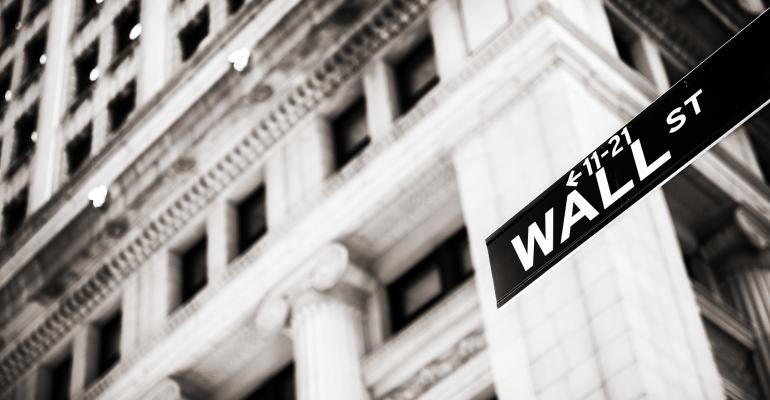(Bloomberg) -- U.S. stocks have hit 13 records this year and generated $5 trillion of wealth. They’ve stood up to sagging earnings, slowing growth and a surging dollar. The S&P 500 is headed for what could still easily be its best year in six. And yet, sit down with traders and fund managers, and what invariably comes pouring out is frustration.
For anyone wondering why, we give you Aug. 23, 2019. With equities four-fifths of the way to the first up week since July, a flurry of taunting tweets from President Donald Trump stopped bulls in their tracks, triggering the third drop of more than 2% this month. The index just matched its longest streak of weekly declines since 2011.
For all its buoyancy and resilience, this remains a rally that has pervasively failed to convince the institutional class to buy in. Why should it, with a trade war raging and Trump standing by seemingly bent on taking the wind out of every advance with angry escalations?
“You’d think we’d be conditioned to expect the unexpected, but I guess we’re not,” said Marvin Loh, global macro strategist at State Street. “It’s just ultimately difficult to form a very strong opinion on anything when things change as aggressively as they do.”
Rather than jump in, traders are taking cover. In just the past few days, use of bearish options contracts that hedge against declines like Friday’s has skyrocketed, pushing ratios measuring their popularity to the highest since December’s rout. Going by positioning, hedge funds are getting to a point of disaffection not seen in three years.
The S&P 500 lost 2.6% on Friday after the U.S. said it will respond to new Chinese tariffs and Trump lambasted the Federal Reserve’s Jerome Powell following his speech at Jackson Hole. The plunge destroyed what was shaping up to be a 1.2% advance for the week. It’s the fourth time since the bull market began that a Friday rout erased a gain of more than 1% through Thursday, data compiled by SentimenTrader show, a phenomenon that was more or less unheard of in the old days.
Turnarounds like that show why professional speculators are steering clear. A measure of hedge-fund returns attributable to the S&P 500 is sitting near an all-time low, according to Marko Kolanovic, JPMorgan Chase & Co.’s head of macro quantitative and derivatives research. (All else being equal, “such low positioning is positive for equity performance going forward,” he wrote in a note this week.)
Elsewhere, money has coursed out of exchange-traded funds. With investors on edge over trade tensions, U.S.-listed equity ETFs saw withdrawals of close to $18 billion in the three weeks ended last Friday, the most in six months, data compiled by Bloomberg show. A large chunk of those outflows has come from the largest fund tracking the S&P 500, the SPDR S&P 500 ETF Trust, which has seen outflows of nearly $10 billion in August.
Toward the end of last week, speculators sent a ratio of bearish versus bullish equity options to the highest since December, hedging against further losses after the worst streak for stocks since May.
“It an environment where you need to stay nimble and flexible because the news can change on a dime,” said Ed Campbell, portfolio manager and managing director at QMA. His firm was overweight equities at the beginning of the year but pulled back to neutral in May when trade tensions started to intensify and lightened risk further at the beginning of this month.
“I don’t think it’s one where the risk-reward profile is such where you want to be aggressively overweight equities or risk assets in general,” he said by phone. “It’s one where an above average cash weighting is prudent in the event that opportunities come and we do get significant draw-downs where you can put that dry powder to work.”
On the other hand, August is typically a volatile month. The S&P is still up nearly 15% this year and if history is any guide, the rest of the year could see further gains. Since 1928, when the index has been up through July, stocks have gained an average of nearly 4% for the remainder of the year, according to research from Bespoke Investment Group. And years when stocks have been up more than 10% through July have seen average gains of close to 6% from August through the end of the year.
For John Augustine at Huntington Private Bank, there are reasons to stay optimistic. The September trade talks are still on the books, central banks could be more accommodative going forward, the U.S. consumer is doing reasonably well, and there’s still plenty of opportunity for dialogue between the U.S. and China.
“We’re not losing confidence,” said the bank’s chief investment officer from his Columbus, Ohio office. “Markets are not throwing in the towel.”
--With assistance from Sarah Ponczek.
To contact the reporters on this story:
Vildana Hajric in New York at [email protected];
Elena Popina in New York at [email protected]
To contact the editors responsible for this story:
Jeremy Herron at [email protected]
Chris Nagi, Dave Liedtka





